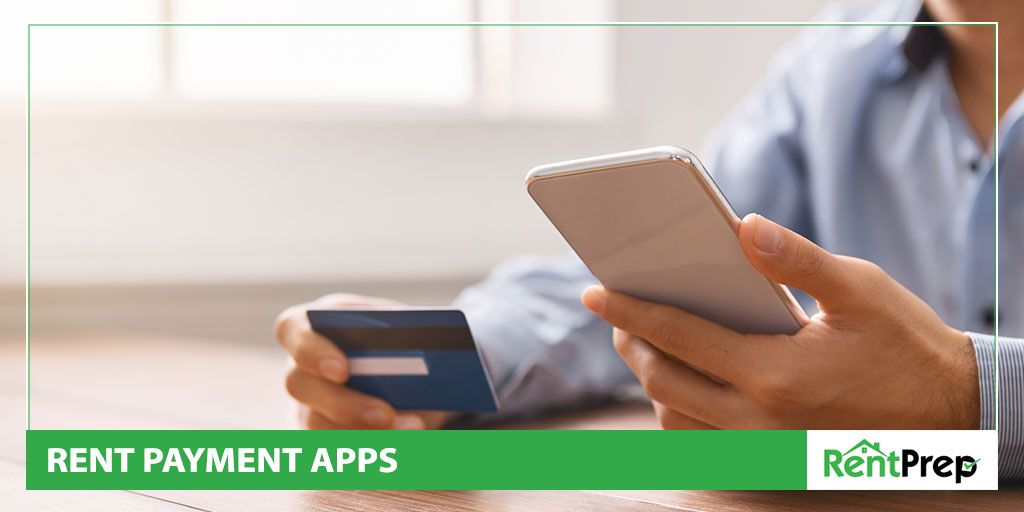
For decades, rent collection was primarily done via cash or checks, but that has changed dramatically in the last decade. Now, rent payment apps and other online payment systems are taking over the industry. Landlords, both new and experienced, must learn more about these rent collection apps to see how to best utilize these updated services.
Rent collection apps have several benefits for landlords, and most landlords who transition to using these payment processes find that rent comes in more consistently and reliably after the change. Are you making rent collection more difficult by resisting this technology shift?
Here at RentPrep, we understand that it can be confusing to know which payment app to use for rent collection and how to utilize these services best. Today’s guide will help you learn the best rent collection app for your rental business to get started with it right away.
A Table Of Contents On Apps For Paying Rent
Are you ready to learn more about apps for paying rent, how they work, and what they can do for your business? In today’s RentPrep guide for landlords, we’ll cover everything landlords should know first about rent payment apps.
- Rent Payment Apps: Should Landlords Use Them?
- The Best Rent Collection Apps: Top 4 Options
- Don’t Forget: Reliable Tenants Mean Reliable Rent
- Rent Collection App FAQs
- Moving Forward With Apps to Pay Rent
Rent Payment Apps: Should Landlords Use Them?

Rent payment apps are a natural progression globally as technology and digital payment methods are accepted at more and more locations. From paying through your phone for your coffee to paying for your groceries as you are shopping, technology rapidly changes how payments are processed.
While the rental industry has been slower to change than other industries, it’s becoming the norm for landlords to use rent payment apps. This is particularly true for landlords who own more than five properties or those working with a property management company.
Do It: For The Tenants
Accepting online rent payments is the expectation for many renters, so learning about the best rent collection apps is time well spent.
The primary reason landlords should seriously consider using rent payment apps is to attract and appease more tenants. Prospective tenants find this process easier on many accounts, though some will still appreciate the option to pay via cash or check when needed.
Simplifying the rent payment process shows tenants that you genuinely care about their experience with you as a landlord. Happy tenants are more likely to extend their lease or recommend your company to others, which is crucial for your long-term business success. Being known as a great landlord can be incredibly valuable.
Do It: For Your Business
Another reason for using rent payment apps is to simplify your business processes. Rent collection can get complicated when you’re waiting for checks in the mail, collecting money from drop boxes, or otherwise needing to go out of your way to do the actual collection. Then, the information also needs to be entered and documented into your business financials.
Why not use a tool that allows everything to be easily collected, recorded, and calculated all at once?
Utilizing rent payment tools and apps can make it much easier to do rent collection, which will save your business time and money. Even though you may need to pay some small fees to make this change, the total time and money saved will be well worth that investment.
The Best Rent Collection Apps: Top 4 Options
Apps for paying rent vary widely, but these are the top four options that landlords have found to be the most valuable in the rental business:
#1: PayPal
PayPal is an international service that many people are familiar with due to its easy and ubiquitous use. PayPal supports sending both personal and business payments, and there are many different ways to fund these payments through the app.
Pros Of PayPal:
PayPal is the most straightforward payment service for businesses because there are clear rules and regulations for companies, as well as business-specific accounts, on the site. This makes it simple for landlords to create a business account for rent collection.
There are no send limits on PayPal, and tenants can fund their payments through bank accounts, credit cards, or PayPal balances. These aspects make it simple for tenants to fund and send their rent.
PayPal is also very familiar to people, so many tenants will feel comfortable working within the parameters of the site to make their rent payments.
Cons Of PayPal:
Like other general payment services, PayPal does not have specific features for landlords, nor is it possible to block any incoming payments. This can make eviction complicated as tenants can send money at any time, even if you have decided to evict them for nonpayment of rent.
Using PayPal will incur business fees, and these fees can change. These fees will decrease your profit from the monthly rent sent to you on the platform.
For even more information on using PayPal for rent collection, check out this video:
#2: Venmo
Venmo is another payment service with more limited features than PayPal, but one that focuses on transferring money from one person to another. PayPal owns this company, so there is some similarity in how their features are structured.
On Venmo, money can be sent from one user to another from a bank account, debit card, credit card, or Venmo balance. Money received will go into your Venmo balance, where it will remain until you send the money to another person or transfer it to your bank account.
Pros Of Venmo:
Venmo is quick and easy to use. After setting up and verifying your account, money can be sent almost immediately. Additionally, it is easy for bills to be split between multiple people, so tenants sharing rent can easily use Venmo to pay their portion.
Many tenants, especially younger tenants, will already be familiar with Venmo, which is a plus. They will likely already know about its features and how to use the app. Tenants who aren’t familiar with Venmo yet will appreciate that the app doesn’t charge fees to transfer funds to and from your bank, so your tenants will likewise not be charged any fees to pay their rent.
Cons Of Venmo:
However, as with any service, there are some cons to using Venmo for rent payments.
Landlords should be aware that there is a base fee, around 2%, for business transactions on the app. There are also fees for instant withdrawals and check deposits if you need to use these features. The cost is similar to what is seen on other payment services, but many landlords are accustomed to cash or check payments and no fees.
One of the bigger cons of Venmo for landlords is that there is no way to manage payments specifically for rent. If a tenant sends rent after an eviction notice is sent or sends a partial payment, there is no way to decline this payment. This could lead to issues in eviction cases where the case may be halted due to partial payment.
#3: Zelle
Like Venmo, Zelle is another person-to-person payment app focused on individual transfers. It is less popular with landlords due to confusing and unclear rules about business transactions, but some small landlords still choose to use this payment app.
When sending money via Zelle, funds are sent directly from one bank account to another. You don’t need the bank account information of either party and can instead designate where the money is sent via a phone number or email address.
Pros Of Zelle:
It’s free to send and receive payments on Zelle. It’s also effortless to do so thanks to the high number of integrations available with banking apps. All it takes are a few simple registration questions to get set up.
Additionally, Zelle is very secure due to the fact that your information is not stored or shared. All you need is a phone number or email address of the recipient, and then you can send a payment. Neither party shares nor sees more information than that.
Cons Of Zelle:
Zelle has several big drawbacks for landlords. In addition to only working with US banks, it can only be used when linked to a bank account. Tenants who may need to pay with a credit card or debit card without direct linking will find this difficult to work with.
Additionally, some users have send limits as low as $500 per week. The limit depends on your bank and what agreements they have in place with Zelle, so it can vary. This may cause Zelle not to be an option for you and your tenants.
Finally, your bank may not offer Zelle for your business account. If your bank doesn’t have Zelle for business, you may not be able to use it for rent payments due to the complicated rules surrounding business and commercial use.
#4: Another Popular Alternative: Property Management Apps

In addition to the general payment services listed above, there are also a variety of rent collection apps built into property management services. Some property management companies have their own apps that tenants can use to pay rent.
Some landlords pay for access to property management portals where rent reminders, late fees, and rent collection can all be easily managed.
This is the favored option for many landlords, particularly those who manage upwards of 10 properties due to the streamlined nature of these apps. The property management features have major benefits for both tenants and landlords, making these apps a viable option.
Available at a low cost, these apps are designed for rent collection and property management, so they have all the features that landlords need. However, the price may not be right for every landlord at this time.
Don’t Forget: Reliable Tenants Mean Reliable Rent
Even though rent payment apps can make it easier for all tenants to get their payments in on time, a payment app isn’t guaranteed to turn an unreliable tenant into a reliable one. The only way to work on filling your rentals with reliable tenants is to ensure your tenant screening practices are solid.
Tenant screening can be complicated, but it’s been proven that taking more time to carefully screen and select tenants has major benefits.
If you’re having difficulty with tenant screening or don’t have enough time to run individual reports, using a tenant screening service like the one we provide here at RentPrep could be what you need.
Tenant background checks at RentPrep can be used for credit reports, credit checks, background checks, and other reports. Check out our pricing packages today to find out how you can save time, and ultimately money, with tenant screening at RentPrep.
Rent Collection App FAQs
What is the best app for collecting rent?
Ultimately, the best choice for collecting rent will depend on your business portfolio and needs at this time. For most landlords, it can seem like the logical choice to use a general payment app that has peer-to-peer services, but the business fees and lack of management features can cause issues down the line.
If you find that these services lack the support your business needs, we recommend considering property management apps as they are more geared towards landlord needs.
Does rent collection affect credit scores?
Rent collection will only affect credit scores if rent payments are reported to the credit bureaus or a tenant has an outstanding rent debt collection against them. Rent payments can be reported to the credit bureaus through several different avenues, and many property management apps are incorporating this reporting as part of their rent collection process.
What is the safest way to collect rent?
Every method has its drawbacks regarding safety, so many rent collection avenues are comparable in this respect. However, many find that verified online services are the most secure as there is a clear trail of where the money goes and customer service to step in when there are problems. Additionally, you can add extra security through the specific platform as needed.
Moving Forward With Apps To Pay Rent
Using apps to pay rent is a common desire among tenants as cell phones and internet access are more accessible than ever. The ease of instant rent payments through these apps is beneficial for tenants, and many landlords also find the benefits of using rent payment apps to be worth the setup investment.
Remember, the goal of using rent payment apps is to:
- Simplify the rent payment process
- Reduce the amount of time it takes to receive rent
- Encourage on-time payments
There are many excellent rent payment options between payment apps and rental-specific rent management apps. Explore these options, and find the best one for your business’s needs.

